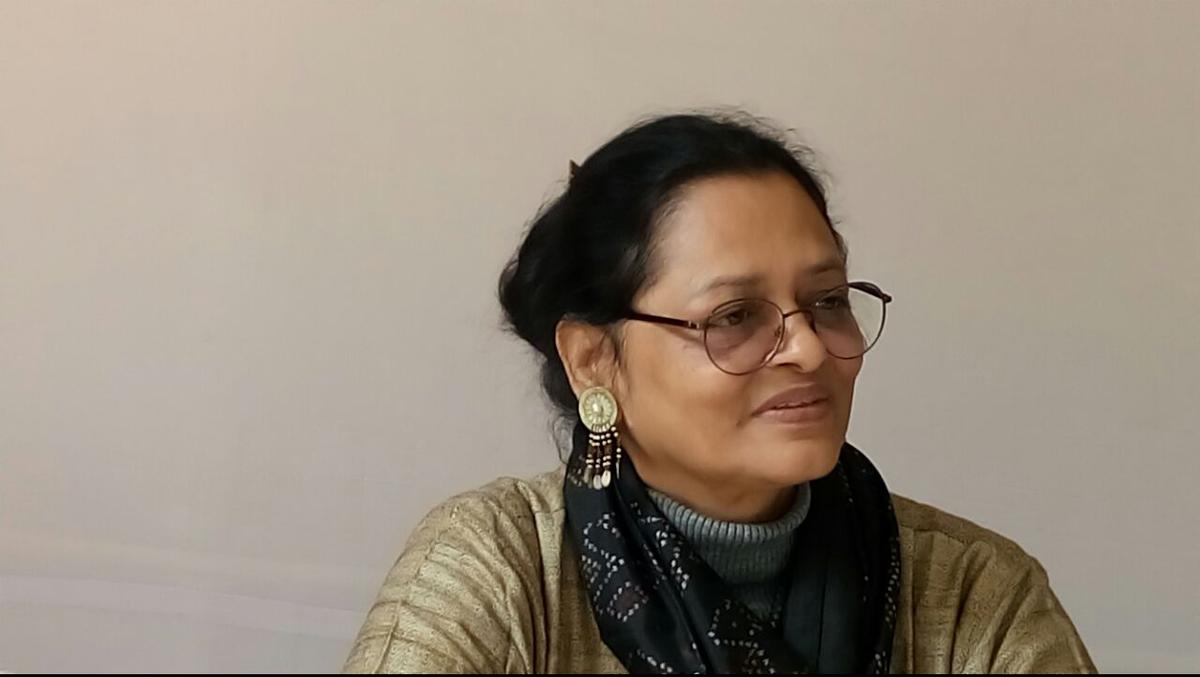Give artist Kanika Mukerjee an old fabric and she turns it into a work of art. Ahead of her solo show Landscape in Cotton at Goethe Zentrum in Hyderabad, the Gujarat-based artist explains how Nature, an integral part of her life, inspired her to acquire a new medium of expression. She uses discarded fabric, mostly cotton, khadi and sometimes silk, to create landscapes and celebrate Nature on canvas.
Of colours and textures

Kanika Mukerjee
| Photo Credit:
Special arrangement
Colours and textures play an important role in choosing the cloth to depict her feelings and the colourful environment. Different cloth strips are either torn by hand or cut by scissors and the acquired fabric collages (sometimes abstract) are glued on the canvas to create beautiful landscapes.
The exhibition comprising 35-odd exhibits depict Nature, trees, jungles (inspired by The Jim Corbett National Park in Uttarakhand) and the changing colours of the skyline at different times of the day. Except the images of the sun and stars, which have a fixed form, her landscapes in cotton have collages of different imagery.
Recycling old clothes

Work by Kanika Mukerjee
| Photo Credit:
Special arrangement
Born and brought up in Delhi, Kanika graduated from the Delhi College of Art, majoring in fine arts. “I used to work with watercolours, ink and dry pastels. I also love my Indian textiles and their textures and would never throw away old clothes and make bags or doll clothes for my children,” she recollects. The first stroke of inspiration to use cloth happened by chance in 2007. “I wondered why I should stitch old clothes and not use them as they are,” she recalls. She casually placed them on a canvas and was surprised with the result. “The joy I experienced is inexplicable feeling; one could mix different colours of thread to weave a cloth but mixing different strips of cloth to create a colourful collage with unique textures was amazing.”
Kanika has been working in this medium for more than 15 years now and often collects cotton clothes from places she visits (“I have an almirah full of old clothes”). Considering herself lucky to live in Valsad, the tribal belt of Gujarat, she says, “With Dharampur on one side and a beach on the other, Valsad is full of green and gives me strength to do so much work. Every moment feels different in the same place. The colours in the skyline in the morning are so different from the colours in the afternoon or evening.”
Creative process

Her process begins by first placing the cloth on a canvas; later she selects the colours and textures, cuts and sticks them on canvas . “The art of expression is easy on some days and the collages happen in a day but when I have a mind block, I am stuck for 15 days with the fabric,” she says of her challenges. Her work too has evolved over the years; she used to concentrate only on colours initially but now adds different elements such as showing the movements of grass with cloth.
Feedback to the works at solo and group exhibitions (more than 10) have been encouraging. At a group show at Visual Arts Gallery in India Habitat Center in April 2023, her collage found a special mention by senior artist Jatin Das. “He said, ‘It is interesting and nice.’ People who see this medium for the first time find it exciting and want to know the process too.”
The Landscape in Cotton by Kanika Mukerjee starts at Goethe Zentrum on February 22; on till March 11

COMMents
SHARE